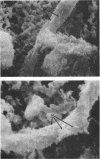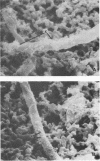Abstract
The respiration of three phenotypes of Histoplasma capsulatum, the causal agent of histoplasmosis in humans, was markedly reduced by low concentrations of montmorillonite but was reduced less by even higher concentrations of kaolinite or attapulgite (palygorskite). The reduction in respiration followed a pattern that suggested saturation-type kinetics: an initial sharp reduction that occurred with low concentrations of clay (0.01 to 0.5% [wt/vol]), followed by a more gradual reduction with higher concentrations (1 to 8%). Increases in viscosity (which could impair the movement of O2) caused by the clays were not responsible for the reduction in respiration, and the clays did not interfere with the availability of nutrients. Scanning electron microscopy after extensive washing showed that the clay particles were tightly bound to the hyphae, suggesting that the clays reduced the rate of respiration of H. capsulatum by adhering to the mycelial surface and, thereby, interfered with the movement of nutrients, metabolites, and gases across the mycelial wall.
Full text
PDF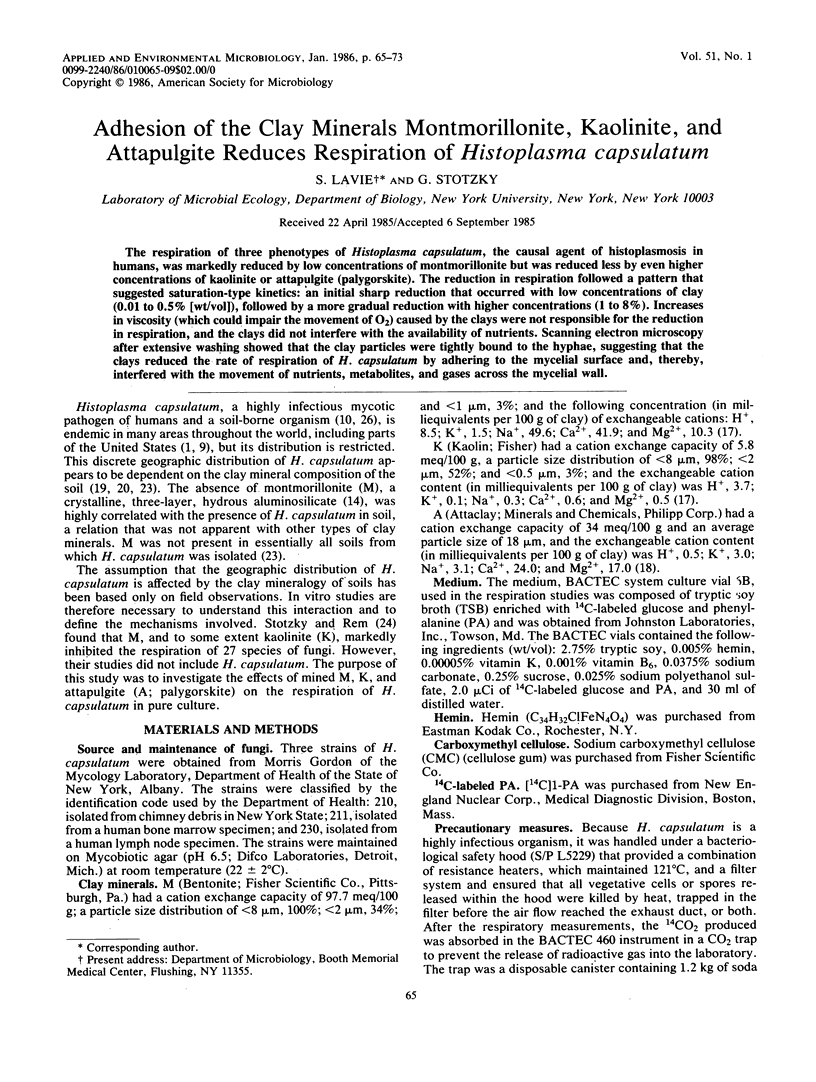
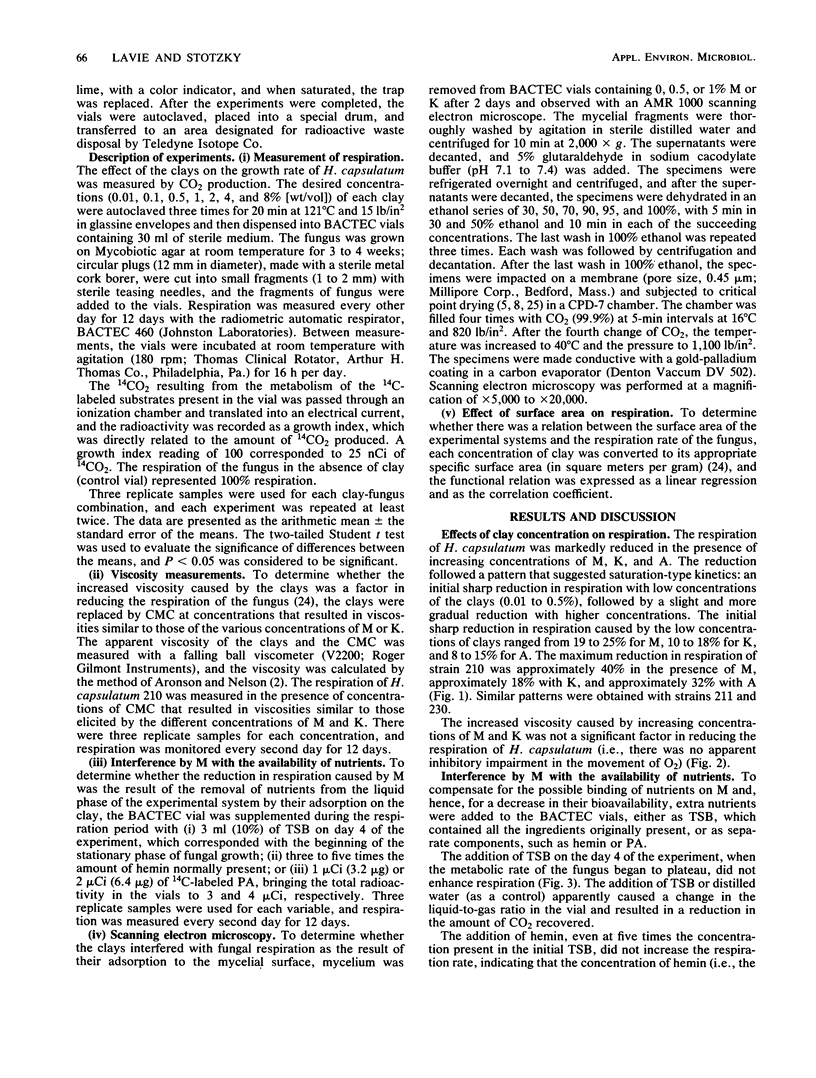
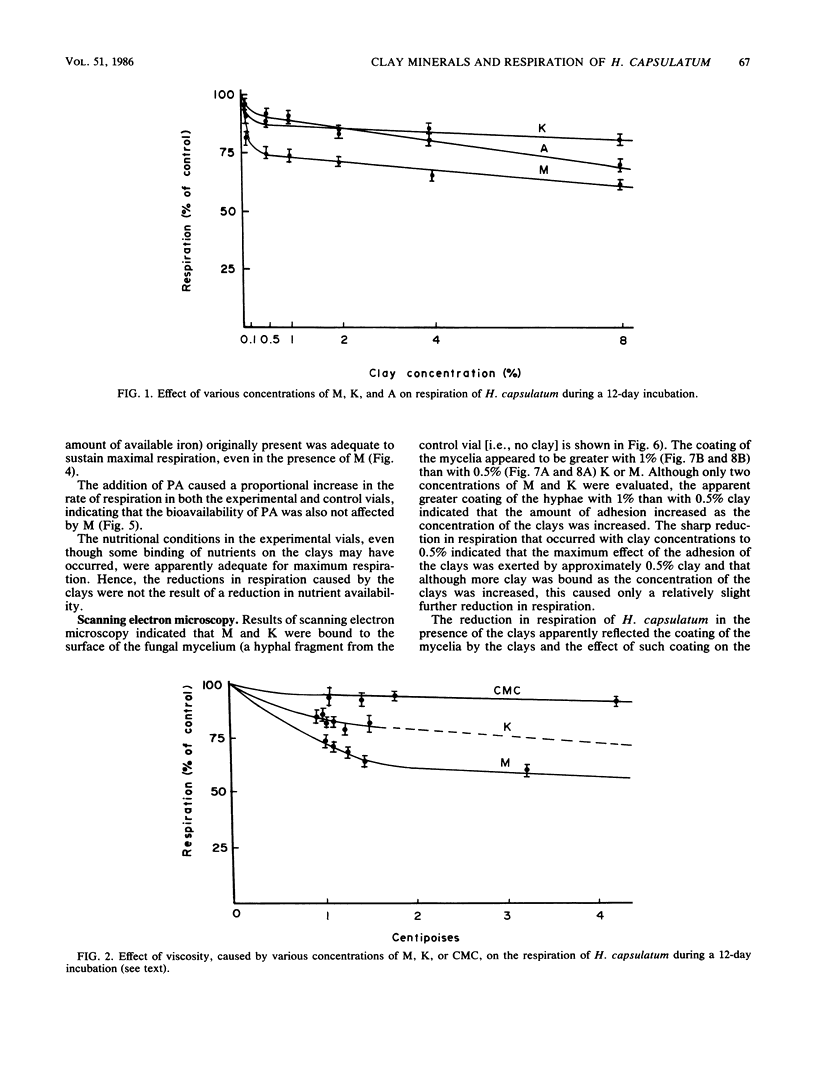
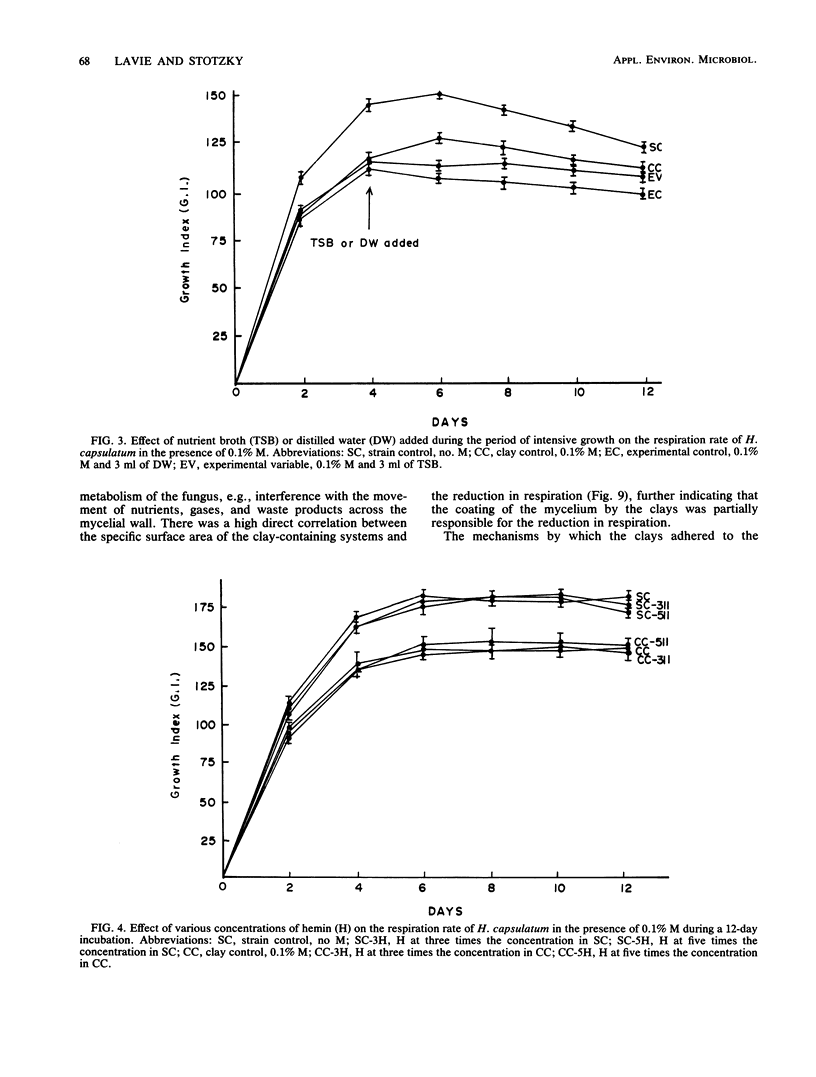
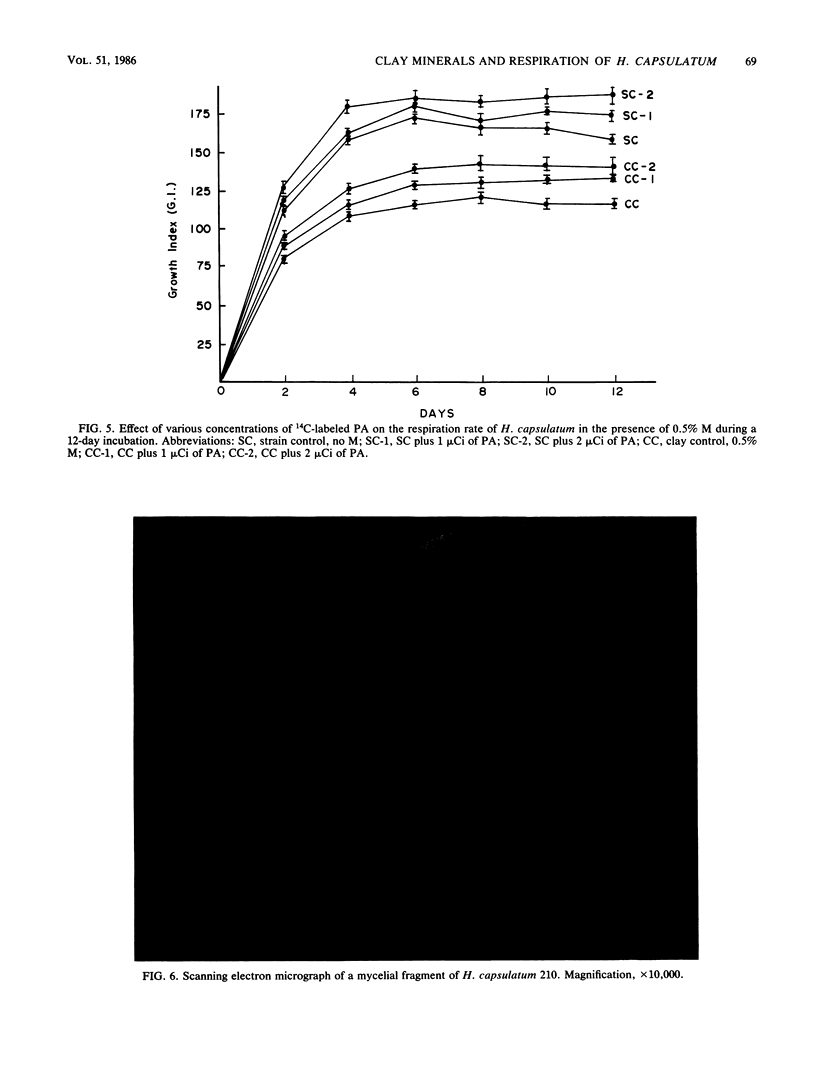
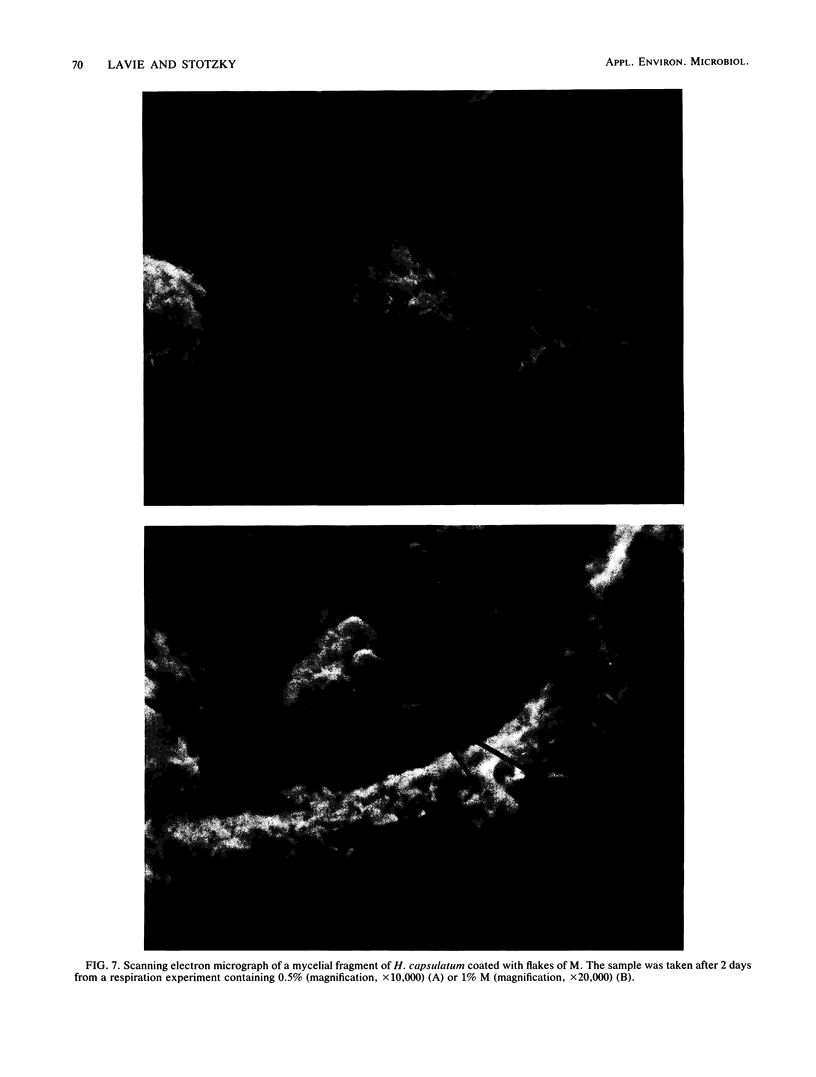
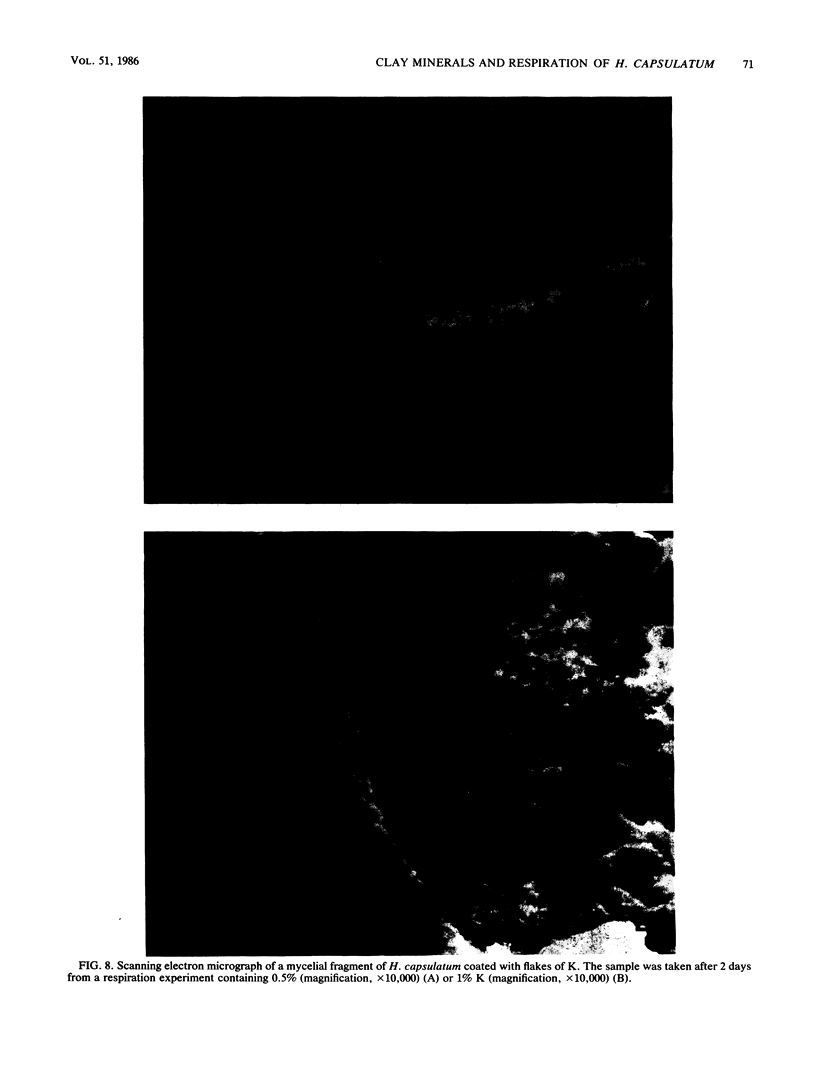
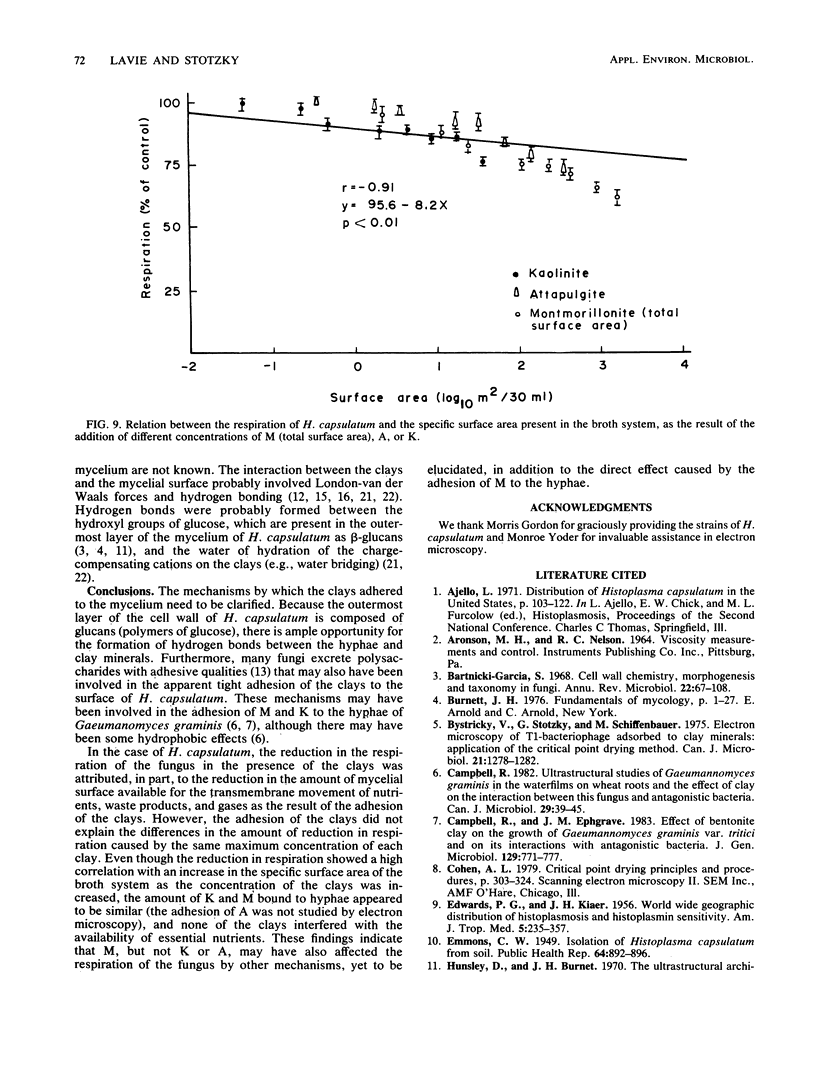
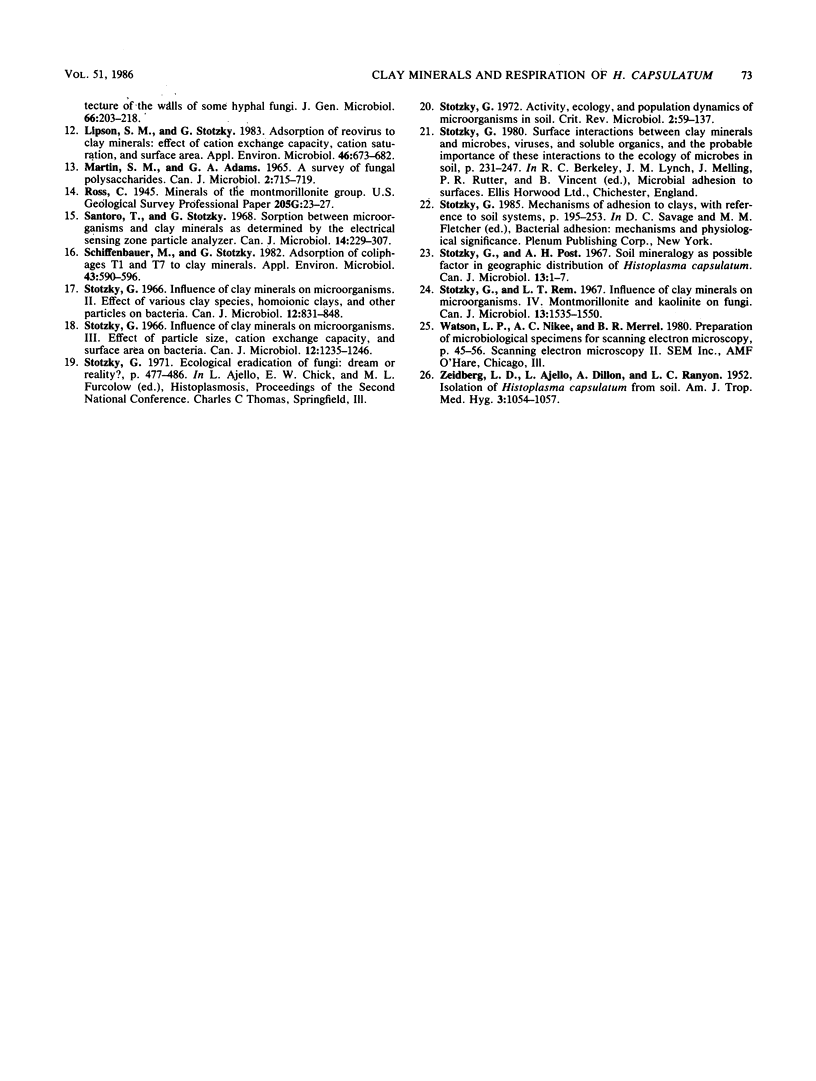
Images in this article
Selected References
These references are in PubMed. This may not be the complete list of references from this article.
- Bartnicki-Garcia S. Cell wall chemistry, morphogenesis, and taxonomy of fungi. Annu Rev Microbiol. 1968;22:87–108. doi: 10.1146/annurev.mi.22.100168.000511. [DOI] [PubMed] [Google Scholar]
- Bystricky V., Stotzky G., Schiffenbauer M. Electron microscopy of T1-bacteriophage adsorbed to clay minerals: application of the critical point drying method. Can J Microbiol. 1975 Aug;21(8):1278–1282. doi: 10.1139/m75-192. [DOI] [PubMed] [Google Scholar]
- EDWARDS P. Q., KLAER J. H. Worldwide geographic distribution of histoplasmosis and histoplasmin sensitivity. Am J Trop Med Hyg. 1956 Mar;5(2):235–257. [PubMed] [Google Scholar]
- Lipson S. M., Stotzky G. Adsorption of reovirus to clay minerals: effects of cation-exchange capacity, cation saturation, and surface area. Appl Environ Microbiol. 1983 Sep;46(3):673–682. doi: 10.1128/aem.46.3.673-682.1983. [DOI] [PMC free article] [PubMed] [Google Scholar]
- Santoro T., Stotzky G. Sorption between microorganisms and clay minerals as determined by the electrical sensing zone particle analyser. Can J Microbiol. 1968 Apr;14(4):299–307. doi: 10.1139/m68-049. [DOI] [PubMed] [Google Scholar]
- Schiffenbauer M., Stotzky G. Adsorption of coliphages T1 and T7 to clay minerals. Appl Environ Microbiol. 1982 Mar;43(3):590–596. doi: 10.1128/aem.43.3.590-596.1982. [DOI] [PMC free article] [PubMed] [Google Scholar]
- Stotzky G. Activity, ecology, and population dynamics of microorganisms in soil. CRC Crit Rev Microbiol. 1972 Nov;2(1):59–137. doi: 10.3109/10408417209108383. [DOI] [PubMed] [Google Scholar]
- Stotzky G. Influence of clay minerals on microorganisms. 3. Effect of particle size, cation exchange capacity, and surface area on bacteria. Can J Microbiol. 1966 Dec;12(6):1235–1246. doi: 10.1139/m66-165. [DOI] [PubMed] [Google Scholar]
- Stotzky G. Influence of clay minerals on microorganisms. II. Effect of various clay species, homoionic clays, and other particles on bacteria. Can J Microbiol. 1966 Aug;12(4):831–848. doi: 10.1139/m66-111. [DOI] [PubMed] [Google Scholar]
- Stotzky G., Rem L. T. Influence of clay minerals on microorganisms. IV. Montmorillonite and kaolinites on fungi. Can J Microbiol. 1967 Nov;13(11):1535–1550. doi: 10.1139/m67-202. [DOI] [PubMed] [Google Scholar]
- Watson L. P., McKee A. E., Merrell B. R. Preparation of microbiological specimens for scanning electron microscopy. Scan Electron Microsc. 1980;(Pt 2):45–56. [PubMed] [Google Scholar]




